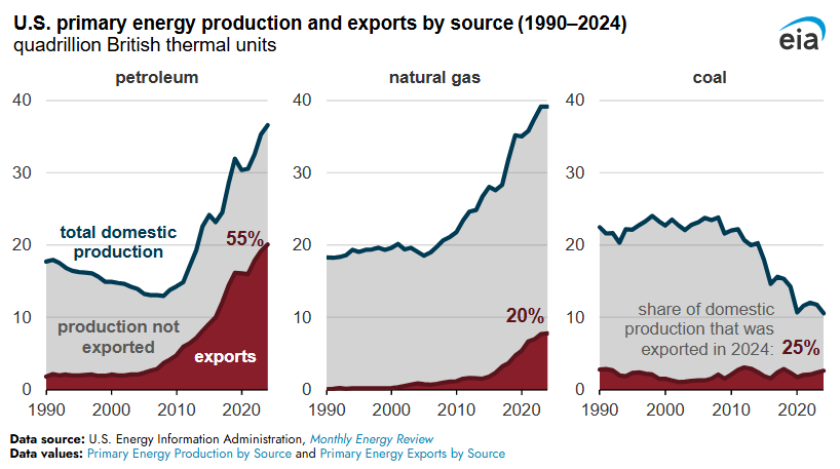In 2024, the United States reached record energy output of 103 quadrillion British thermal units (quads) of primary energy, exporting a historic 31 quads, or about 30 percent of production, EIA report said.
Exports were dominated by fossil fuels, with 55 percent of crude oil and natural gas plant liquids shipped abroad, mainly to Europe and Asia. This growth was supported by the 2016 removal of crude oil export restrictions, expanded port capacity, and strong demand from Europe following the EU’s 2022 ban on Russian seaborne crude.
About 20 percent of dry natural gas production was exported, driven by liquefied natural gas shipments to Europe and Asia, supported by new export terminals and Europe’s diversification away from Russian supplies.
Coal exports accounted for 25 percent of production, even as domestic consumption fell due to power plant retirements and competition from gas and renewables; most coal exports went to Asia and Africa.
Mexico was the leading importer of U.S. crude, petroleum products, and natural gas, while India was the largest coal buyer. The Netherlands served as a key re-export hub for European markets.
While fossil fuels remained dominant in exports, renewable energy production continued to expand within the U.S. Wind and solar generation reached record highs, supplying about 15–16 percent of electricity, driven by falling technology costs, incentives from the Inflation Reduction Act, and rapid growth in battery storage capacity that more than doubled in 2024. This growth further reduced domestic coal demand and positioned the U.S. as an emerging player in clean energy technology.
Several LNG export projects began adopting low-carbon branding by integrating carbon capture and methane-leak mitigation. The export surge confirms the U.S.’s status as a major global energy supplier, but domestic trends signal a gradual shift toward a cleaner energy mix that could shape both domestic consumption and future export portfolios.
GreentechLead.com News Desk

